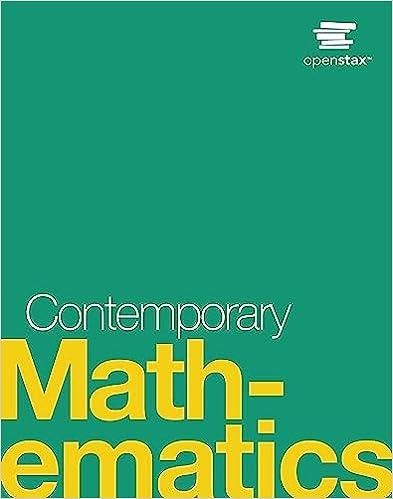Suppose that in 2016 , States (A, B), and (C) had populations of 13 million, 12 million,
Question:
Suppose that in 2016 , States \(A, B\), and \(C\) had populations of 13 million, 12 million, and 112 million, respectively. In 2020, State A has grown by 1 million residents, State B has lost 1 million residents, and State C has gained 2 million residents. Compare the apportionments in 2016 to 2020 using each method given below. Which of the four methods violate(s) the population paradox in this scenario?
Fantastic news! We've Found the answer you've been seeking!
Step by Step Answer:
Related Book For 

Question Posted:





